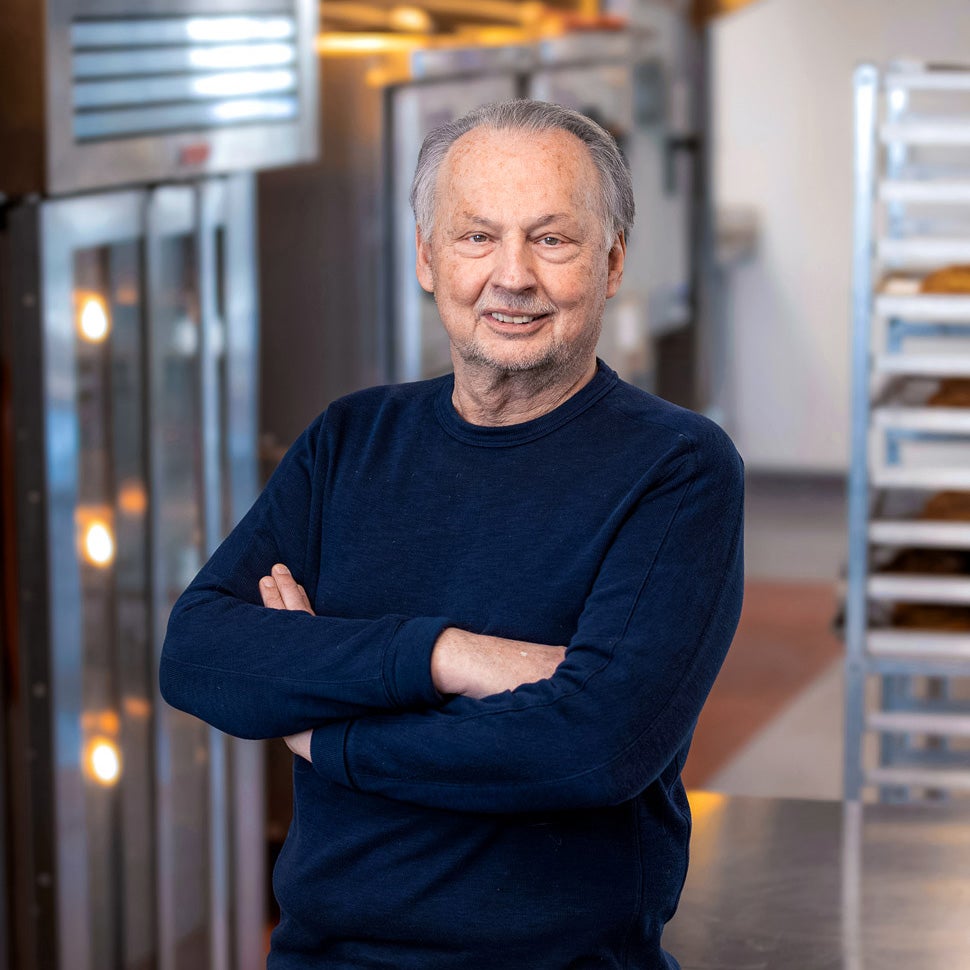Bill Seretta leads the nonprofit Fork Food Lab, a food business incubator and shared manufacturing and processing facility that moved from Portland to a larger retrofitted facility in South Portland last year. The space helps entrepreneurs develop restaurants, food trucks and food products, helping drive that sector of Maine’s economy.
On track to enroll 100 members by June, Fork offers production space, equipment, assistance with licensing, marketing, and an online and popup marketplace. Further expansion is planned.
A serial social entrepreneur with over 50 years of experience launching new enterprises and rebuilding old ones, Seretta founded the Sustainability Lab, a Yarmouth nonprofit, which took over Fork Food Lab in October 2018.
Mainebiz: What led you to Fork Food Lab?
Bill Seretta: The Sustainability Lab held its first New England Food System Innovation Challenge in 2015. The two guys who started Fork Food Lab won the competition. I got to understand what they were doing. They opened Fork in 2016 and sold it in 2017 to a New York company, which then decided it was too small and were going to close it down in October 2018. There were 25 members at that point.
I contacted the owners, thinking this could be an important cornerstone for the local food system, particularly companies adding value to local foods.
The model was pretty simple, but we didn’t know what the demand curve would be. It was clear we needed to focus on particular strengths — packaged goods, caterers and food trucks. We had some of each. We inherited a $50,000 USDA grant, as a stipend to bring in members, and found 10 more. By December 2019, we were in the high 40s. That’s when we started looking for a bigger space. Then COVID hit. Some members couldn’t pivot. We had 50 going into COVID and 25 by June 2020.
MB: And after 2020?
BS: Delays and escalating prices. But the idea of local food was growing. During COVID, everybody said, ‘I’ve got to get food locally.’ That became the norm and drove everything from that point on. We started getting new members and 100 people on the waiting list.
MB: After buying the new facility, what was involved in becoming operational?
BS: We had to build out 18,000 square feet and install all-electric equipment. We moved 47 companies on June 30 and are now finishing 2,500 square feet of small batch processing and package space for fruits and vegetables. We’re scaling up projects to upcycle salvaged food.
MB: Further plans?
BS: We’re looking at a pop-up space, event space, palletized freezer storage for internal use and for the farming community and expanding our meat processing capacity. This is all based on our ability to raise money.
What’s been challenging is that our budget for this project went up 30% in three years, from $10 million to $15 million, financed by a mortgage, construction loans, grants and contributions. Over the next two years, we have to raise an estimated $7 million for the remaining work and to pay off our construction loans.
MB: What are you most proud of?
BS: Sixty percent of the businesses are women-owned; at least 20% are New Mainers and BIPOC. We have representation from Africa, Southeast Asia, South America. The food and the range of new ideas coming here are phenomenal.
And the sense of community. To me, the most exciting thing is the range of food and culture that’s represented by all these chefs as they’re creating and sharing. We’ve lowered the barrier to entry to include pretty much anybody: If you have an idea, you can try it out without going bankrupt. If it takes off, you’re rewarded quickly because we get you in front of customers.
We haven’t crossed the finish line. We’re very visible and we have a neat facility. But we have a long way to go.
